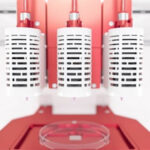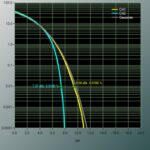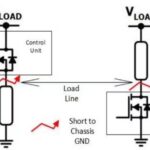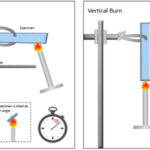A large number of electronic components and systems are digital. Radio, TV and sound reproduction, to mention a few examples, have in recent years all gone digital, with increased precision and efficiency. The digital revolution has been nearly universal in today’s amazing oscilloscopes, where light-weight digital flat-screen models far outperform the old analog ancestors with their bulky cathode-ray tubes and heavy enclosures.
And yet, the natural world on any scale larger than the quantum domain is predominantly analog, and it is hard to imagine this will ever change. Temperature, light intensity, mass, magnetic field strength and all the other variables in our environment vary continuously as scalar or vector quantities, and for practical purposes there is an infinite number of values that are possible.
In an oscilloscope as it currently exists, there are analog channels, usually two or four, that permit connection of probes or BNC cable inputs. (There are also provisions for digital inputs, but that’s another story.)
After amplification or attenuation and prior to processing and storage in memory or display on the flat screen, the analog signals must be digitized. This takes place in the analog-to-digital converter (ADC). There is one of these for each channel. To perform this task, the analog signal is sampled at a rate that is determined by an oscillator-driven clock circuit.
Since the rate at which an oscilloscope samples an analog signal is fixed, this metric is a highly meaningful parameter for the make and model under consideration. If the sample interval is ts, the sample rate is 1/ts. In some advanced models, this rate may be as high as 100 GS/sec on each channel. Typically, the sample rate is printed prominently on the front panel beside the instrument’s bandwidth.
As the sample rate rises, so does the amount of memory required to store the captured signal. The amount of memory is furthermore a function of the duration of the waveform. The horizontal scale setting of the particular instrument determines the waveform’s time duration. The usual scenario is 10 divisions along the X-axis.
Consequently, the time duration of the waveform is ten times the horizontal time scale. Where there is a 5 GS/sec sample rate, and the horizontal scale is 20 µsec per division, the memory requirement for the waveform will be one million points. For this reason, a high sample rate may impede the oscilloscope’s performance, causing a delay and possible gap in data.
The actual sampling of data in scopes can take place in a variety of ways. One approach employs a flash ADC. A flash ADC is formed using a series of comparators, each one comparing the input signal to a reference voltage. The comparator outputs connect to the inputs of an encoder circuit. This circuit produces a binary output. As the analog input voltage exceeds the reference voltage at each comparator, the comparator outputs will sequentially saturate to a high state. The encoder generates a binary number based on the highest-order active input, ignoring all other active inputs.

Scopes use flash converters because they are fast, being limited only because of comparator and gate propagation delays. Unfortunately, flash converters are component-intensive. A three-bit flash ADC, for example, requires seven comparators. A four-bit version would need 15 comparators. Each additional output bit doubles the required number of comparators.
Rather than use flash ADCs, some scopes may use several slower ADCs, all having a slower sampling rate, but clocked out-of-phase with each other. This technique pulls samples from each ADC round-robin style. This interleaving of multiple ADCs with clocks that are slightly out of phase with one another might result in a sampling rate five times that available from a single chip. Use of multiple high-speed ADCs with their “start conversion” signals staggered this way explains why some scopes have higher sample rates in single-channel mode than in dual channel mode.
Also, scope users should note the use of the term “equivalent sampling rate” by some scope manufacturers. An equivalent sampling rate is not a live sampling rate. It refers to using samples of multiple periods, and sampling the signal at different moments. Combining these samples gives an equivalent sampling rate that is higher than the scope’s real-time rate. This technique can be accurate on periodic signals, less so on those that are not periodic.
Finally, an important parameter of an oscilloscope is its “single shot” sampling rate. It indicates what kind of non-periodic signal the hardware is capable of capturing.
The post Understanding sampling rate appeared first on Test & Measurement Tips.






